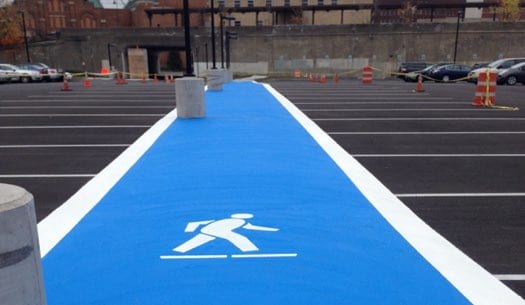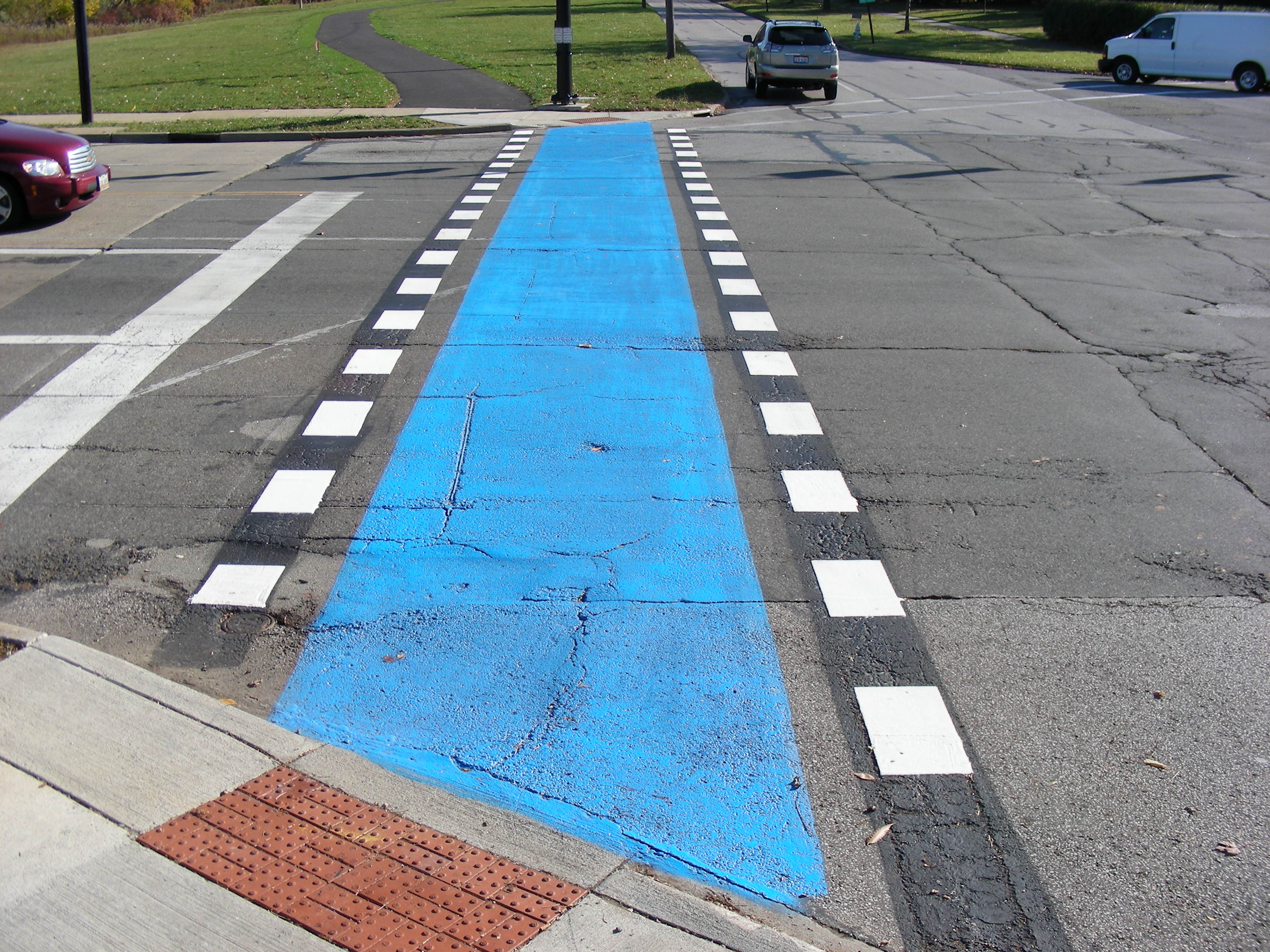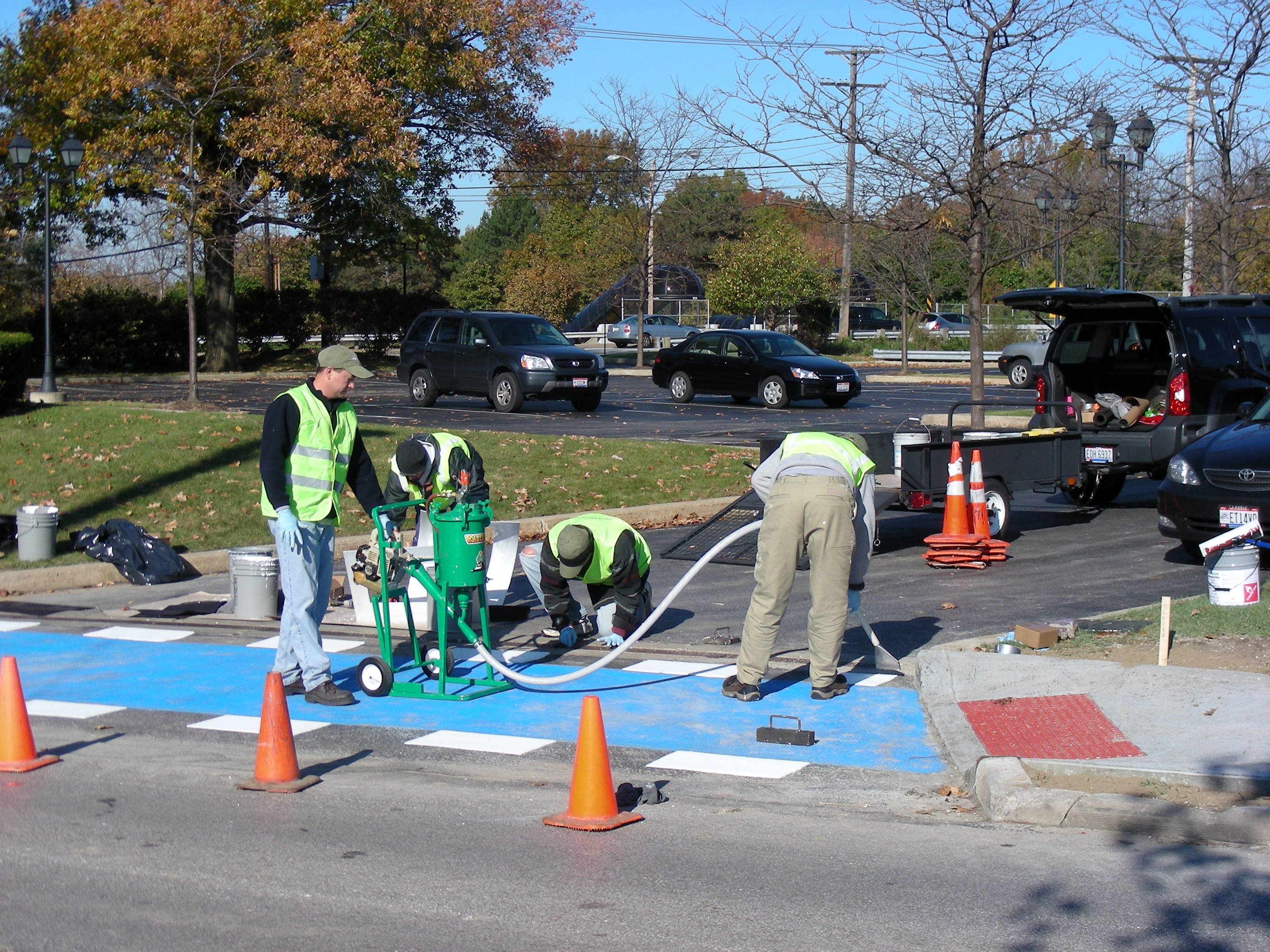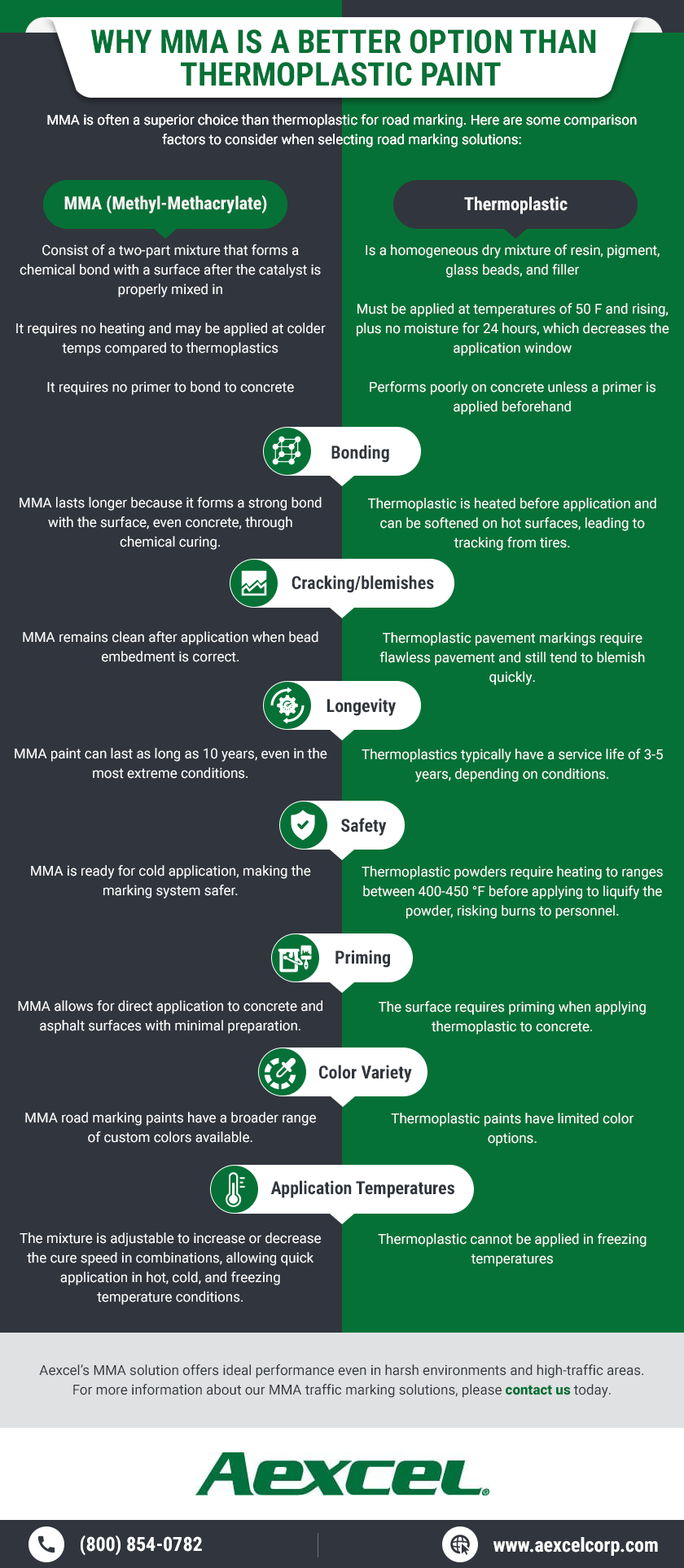MMA vs. Thermoplastics for Pavement Marking
Highly trafficked highways, roads, intersections, dedicated bike lanes and paths require durable lines to guide the flow of traffic, which cannot be achieved with traditional waterbased paint. Due to the high cost of maintenance, state and local agencies have looked for other options. Methyl methacrylate (MMA) and thermoplastics have both become popular for painting lines and markings on paved surfaces.

Thermoplastic
Thermoplastic is a homogeneous dry mixture of resin, pigment, glass beads, and filler. When heated, the mixture moves into a liquid state and is applied either by spray or extruded on the road ranging from 90 to 120 mils depending on the specification. When applied, thermoplastics cure through the release of heat and return once again to solid form. Thermoplastics must be applied at temperatures of 50 F and rising, plus no moisture for 24 hours, which decreases the application window. Another version of thermoplastics, called Preformed, is provided in premade (preformed) symbols and shapes and used typically for intersection markings. In the case of preformed, the material is placed on the surface, then heated by a handheld propane torch to wet out into the surface, then cure as heat is released.
Thermoplastics typically have a service life of 3-5 years, depending on conditions. In winter climates, thermoplastics are very susceptible to snow plows due to its raised structure and can be sheared completely off, leaving no marking on the road. In addition, thermoplastics are sensitive to changes in temperature in which “freeze-thaw” will typically cause cracks, pinholes, and grooves throughout the entire marking. Thermoplastics must be heated at a very high temperature, between 400 and 450 F, to be effective. This high temperature, besides the risk of burns, will also lead to application errors, most noticeably a darkening of the material should it be applied too hot, or reside in the application kettle too long. Finally, thermoplastic performs poorly on concrete unless a primer is applied beforehand, which adds a second application step.


MMA
MMA has a variety of uses in our everyday lives ranging from shatterproof glass alternatives to bone replacement in hip surgery. The extreme durability of MMA provides for longevity, which can last as long as 10 years, even in the most extreme conditions. No other commonly used road marking products match MMA’s durability. MMA is widely used in extreme winter conditions and high elevations due to its ability to withstand frequent snowplow hits and semi-trucks with chains and studded tires. MMA is also used in highly trafficked intersections, crosswalks, dedicated bike lanes and paths as it stands up to the constant stresses caused by stopping vehicles and turning tires. MMA coatings consist of a two-part mixture that forms a chemical bond with a surface after the catalyst is properly mixed in. It requires no heating and may be applied at colder temps compared to thermoplastics. In addition, it requires no primer to bond to concrete.
MMA paint cures in 15-30 minutes, mitigating the need for lengthy closures when applying the coating to roads and intersections. Its long service life also means less frequent maintenance. MMA is an ideal choice for long stretches of highways, roads, intersections as well as dedicated bike lanes and paths. As such, it has become the preferred marking system for applications which require durability and long-term performance.
Why/When to Choose MMA Over Thermoplastic as a Road Marking Paint/Coating?

MMA is often a superior choice than thermoplastic for road marking. Here are some comparison factors to consider when selecting road marking solutions:
- Bonding. MMA lasts longer because it forms a strong bond with the surface, even concrete, through chemical curing. Thermoplastic is heated before application and can be softened on hot surfaces, leading to tracking from tires.
- Cracking/blemishes. MMA remains clean after application when bead embedment is correct, while thermoplastic pavement markings require flawless pavement and still tend to blemish quickly.
- Longevity. MMA paint lasts as much as five years longer than most thermoplastic road marking solutions.
- Safety. Thermoplastic powders require heating to ranges between 400-450 °F before applying to liquify the powder, risking burns to personnel. MMA is ready for cold application, making the marking system safer.
- Priming. When applying thermoplastic to concrete, the surface requires priming. MMA allows for direct application to concrete and asphalt surfaces with minimal preparation.
- Color variety. Thermoplastic paints have limited color options, while MMA road marking paints have a broader range of custom colors are available.
Contact Aexcel for More Information on MMA Pavement Marking
Choosing MMA over thermoplastic pavement marking solutions provides various benefits to the road marking team, pedestrians, and vehicles. MMA provides a durable, vibrant, and clean marking that lasts for up to 10 years.
Aexcel offers Roadzilla® - Durable MMA Traffic Marking Systems, the ideal solution for marking walkways, intersections, roads, dedicated bike lanes and paths. Our MMA solution offers ideal performance even in harsh environments and high-traffic areas. For more information about our MMA traffic marking solutions, please contact us or request a quote today.


